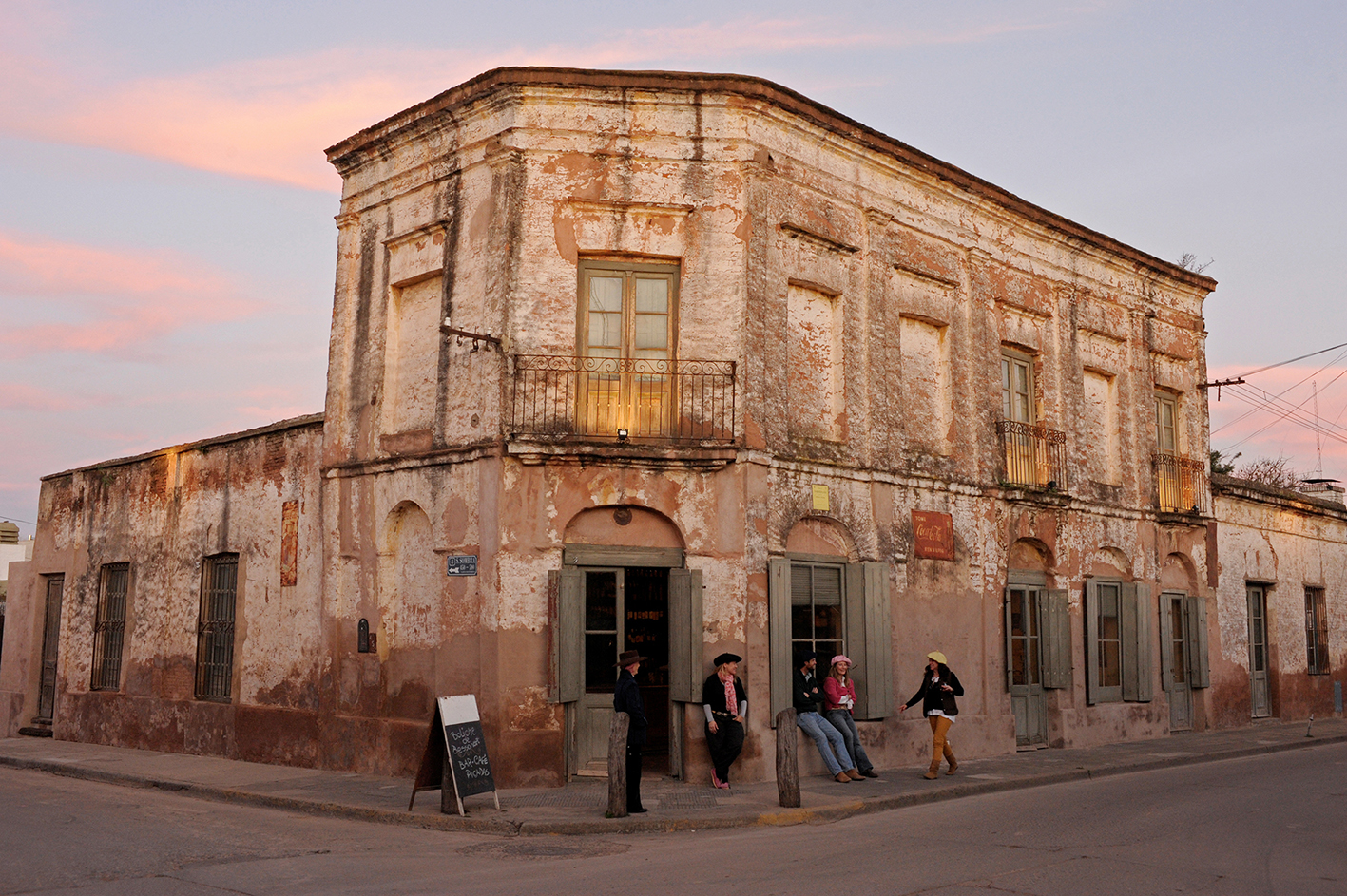Experience the rural life of an authentic Patagonian estancia in the lands of the Perito Moreno Glacier.
Far from mass tourism and 55 km from El Calafate, we find the historic ranch Estancia Nibepo Aike. Initially called La Jerónima, Nibepo Aike covers an area of more than 12,000 hectares, delimited by the South Arm of Lake Argentino and the border with Chile, framed by the Andes Mountains. Dedicated to bovine and sheep production as livestock activities, it is an ideal place to immerse yourself in rural life.
Nowadays you may spend the day visiting the ranch, to experience the life of an authentic estancia located in one of the most impressive settings in Argentina.
Every morning and afternoon, it is possible to enjoy the traditional countryside day. Upon arrival, the host guide will receive and take you to the quincho for a hot drink (tea, coffee or mate) and homemade pastry.

Then, we will set forth on an easy walk to tour the facilities of the farm, which was formerly dedicated to sheep production only, and which today has been transformed into the most prestigious Hereford cabin of these latitudes that also maintains a sheep herd.
The hike will take us to excellent views of the South Arm of Lake Argentino, discovering various rocky outcrops eroded by glacial action and changes in lake levels. Through trails, we will discover a forest of lenga and ñir trees, where caranchos, cachañas, hares, woodpeckers, eagles and an abundant variety of native flora and fauna live.
We will arrive at the shearing shed and current historical museum of the stay. Here we will learn about this peculiar rural work, from the shearing of the animal to the assembly of the bundle of wool; the way in which the wool is stowed and transported.

Next, a “reins test” of riders will be carried out or, depending on the rural activities of the day, farm work will be done in the pens near the main house. In the morning, visitors can also participate in the milking and sheep grazing, concluding with a typical day of work in the ranch.
On the way back, the guide will reveal the history of the place, telling anecdotes and stories of the first settlers. Crossing through the orchard where most of the vegetables in the ranch come from, we will arrive to the quincho, where they will wait for us with an exquisite barbecue, ready to delight us with a delicious Patagonian lamb while enjoying the imposing view of the Cordillera.
For those who choose the extended countryside day option, after lunch or before dinner and rural activities, will take a three hour guided horseback ride on different paths that will allow you to learn more about the corners of Nibepo Aike.

And for those who do not have enough time for a full day experience, you may visit the estancia only for lunch or dinner at the quincho. Taste the homemade delicacies, a barbecue of Patagonian lamb, beef steaks and sausages, with various salads, homemade dessert and one drink per person. This culinary experience is ideal before or after the Perito Moreno Glacier excursion, if you rented a car. It is important to clarify that this option does not include other rural activities.
Another brief but more adventurous option to not miss this incredible Patagonian ranch is to only take a guided three-hour horseback ride, touring the coast of the lake and ascending to the Cerro de los Cristales hill. With its 1282 meters, despite not being the highest in the area, its privileged view allows you to appreciate Lake Argentino, the Perito Moreno Glacier and Torres del Paine, from a single point.

Returning to El Calafate, having experienced the life of a typical Patagonian estancia will give you a new perspective, finding more meaning in the immense Patagonian landscapes characterized by the infinite and the remote.
GENERAL INFORMATION
Countryside Day, morning or afternoon: Traditional option to visit the ranch.
- Schedule: AM Pick up 8.30 – Drop off 15:30 / PM Pick up 16.30 – Drop off 23.30. The schedules are estimates and subject to modification.
- Includes: Welcome reception with tea/coffee/mate and fried cakes/homemade puddings. Walk around the old main house. Stories of the first settlers of the Estancia and the cattle ranching. Brief historical review on the breakdowns of the Perito Moreno Glacier and their consequences in the area. Milking in the morning (depending on the time of calving of the animals), feeding of lambs or calves with a bottle and sheep herding. Demonstration of shearing and test of reins. Visit to the orchard. Lunch/Dinner: Roast Lamb with salads and dessert. A glass of wine or a non-alcoholic drink per person during meal. Bilingual English/Spanish guide during rural activities.
- Not included: Alcoholic and non-alcoholic drinks during the meal, outside the stipulated. Transfers. Tips. Horseback ride. Bilingual guide for the horseback ride.
Extended Countryside Day: a 3 hours horseback ride is added to the traditional Countryside day.
- Schedule: AM Pick up 8.30 – Drop off 19:30 – Horseback ride after Countryside day and lunch / PM Pick up 13.30 – Drop off 23.30 – Horseback ride before Countryside day and dinner. The schedules are estimates and subject to modification.
- Includes: Welcome reception with tea/coffee/mate and fried cakes/homemade puddings. Walk around the old main house. Stories of the first settlers of the Estancia and the cattle ranching. Brief historical review on the breakdowns of the Perito Moreno Glacier and their consequences in the area. Milking in the morning (depending on the time of calving of the animals), feeding of lambs or calves with a bottle and sheep herding. Demonstration of shearing and test of reins. Visit to the orchard. Lunch/Dinner: Roast Lamb with salads and dessert. A glass of wine or a non-alcoholic drink per person during meal. Bilingual English/Spanish guide during rural activities. Horseback riding of approximately 3 hours duration.
- Not included: Alcoholic and non-alcoholic drinks during the meal, outside the stipulated. Transfers. Tips. Bilingual guide for the ride
Patagonian barbecue: Lunch or dinner at the quincho.
- Schedules: Lunch at 12 pm. Dinner at 8 pm.
- Includes: Lunch/Dinner at the quincho: Roast Lamb with various salads and homemade dessert. A glass of wine or a non-alcoholic drink per person during the meal. Ask for alternative menu.
- Not included: Alcoholic and non-alcoholic drinks during the meal, outside the stipulated. Transfers. Tips.
Horseback ride: 3 hours to explore the corners of Nibepo Aike in more depth, crossing the coast of the lake and ascending to the Cerro de los Cristales.
- Schedules: From 3 to 6 pm. Please check in 30 minutes in advance.
- Includes: Horseback riding with guide authorized by National Parks.
- Not included: Transfers. Bilingual guide.


















